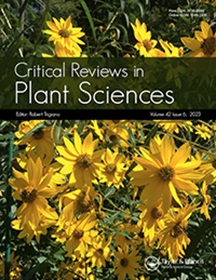Plant Prenylflavonoids and Prenyltransferases Related to their Biosynthesis
IF 4.9
2区 生物学
Q1 PLANT SCIENCES
引用次数: 0
Abstract
Abstract As the most widely distributed phenolic compounds in the plant kingdom, flavonoids play an integral role in plant reproduction and defense. Also, they represent many important quality traits of edible plants like color and antioxidants, and have a variety of biological activities beneficial to human health. To diversify the functions of synthesized flavonoids, plants have evolved various enzymes to perform structural modifications on different flavonoid backbones. One of these modifications is prenylation, which refers to the attachment of an isoprenoid moiety, most commonly a prenyl (C5) group. Numerous structure-activity analyses of prenylflavonoids have shown that isopentenyl substitutions at specific sites can significantly expand and enhance their chemical properties, bioactivities and potential health benefits. This review summarizes prenylflavonoids reported so far in all plant species and highlights the current knowledge on naturally occurring prenyltransferases from different biological sources that can act on plant flavonoids to synthesize prenylflavonoids. Most of them have strict flavonoid substrate- and regio-specificities, and they provide a valuable gene repository to facilitate the efficient scale-up production of flavonoids with specific prenylation patterns in cell factories. To truly achieve this goal, it is necessary to explore more diversified natural prenyltransferases, and to optimize the bioreactors system such as pathway regulation and modular co-culture engineering in the future.植物烯丙基类黄酮及其生物合成相关转移酶
本文章由计算机程序翻译,如有差异,请以英文原文为准。
求助全文
约1分钟内获得全文
求助全文
来源期刊
CiteScore
12.90
自引率
1.40%
发文量
15
审稿时长
>12 weeks
期刊介绍:
Critical Reviews in Plant Sciences focuses on presenting in-depth and up-to-date reviews of timely and/or cutting-edge subjects in the broad discipline of plant science, ranging from molecular biology/biochemistry through the areas of cell biology, plant pathology and physiology, genetics, classical botany, and ecology, to practical agricultural applications. Articles in the journal provide an up-to-date literature base for researchers and students, pointing the way towards future research needs. The journal is also a significant source of credible, objective information to aid decision makers at all levels.

 求助内容:
求助内容: 应助结果提醒方式:
应助结果提醒方式:


